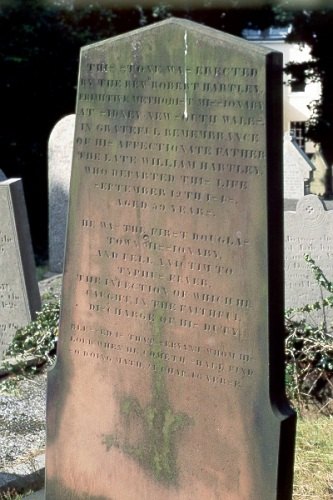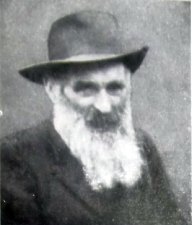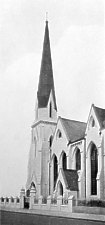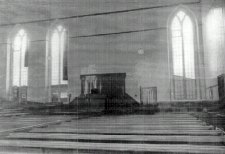Douglas Town and Seamen's Mission (The Bethel)
A non-demoninational evangelical congregation - they dated their start to 1848 when William Harley was appointed as first
town missionary. In 1835 the hulk of an old wooden frigate, berthed at the upper end of the harbour, was given by Earl deGray
to Bishop Ward to serve as the base for a missioning amongst the seamen - the
driving force behind this was probably Dr Carpenter, vicar of St Barnabas.
When after a few years the hulk was no longer of use a committee was established to continue the missioning work though
owning no building to serve as a base.
 |
William Hartley was appointed in 1848 but died very shortly afterwards from Typhus which was then raging
amongst the poor - he was suucceeded by Thomas and John Corlett, Henry Bolton and in 1870 by J. F. Clucas. It was shortly
after Clucas's appointment that an old building on North Quay was acquired and became known as the Old Bethel.
In 1878 William Kneen, who had been a Local Preacher with the Primitive Methodists was appointed - the Kneen family
was to be associated with the Bethel for many years - William married in 1892 Jemina Campbell who had been appointed
as assistant missionary in 1885.
|

Wm Kneen
|
The old Bethel was condemned as unsafe during the slum clearances of 1897 - the Congregational Church in Circular Road
built in 1865 for Wm Smith's followers but which on decline of his congregation in the early 1880's had been sold to the
Unitarians had again seen the collapse of its congregation and was on the market. It was bought for £1700 though with
some misgivings as it was some distance away from the harbour - the Bethel had some supportive friends in William
Joughin and Alderman Goldsmith, H.B. Noble also helped.

Facade - the adjoining buildings on left being air-brushed out |

View of interior from 1948 Centenary Booklet - a very plain interior |
The Bethel continued until the early 1950's but with a declining congregation and the church was sold - the Salvation Army
briefly used it but it was sold to for use as a car showroom, the tower and front facade being removed; it was later demolished
aand the site used for the Post Office headquarters
References
Centenary of the Douglas Town and Seamen's Mission - published 1948
The Manx Museum has recently been given the archives of the Mission.
|
|
|
|
|
Any comments, errors or omissions gratefully received The
Editor
© F.Coakley ,
2011
|



